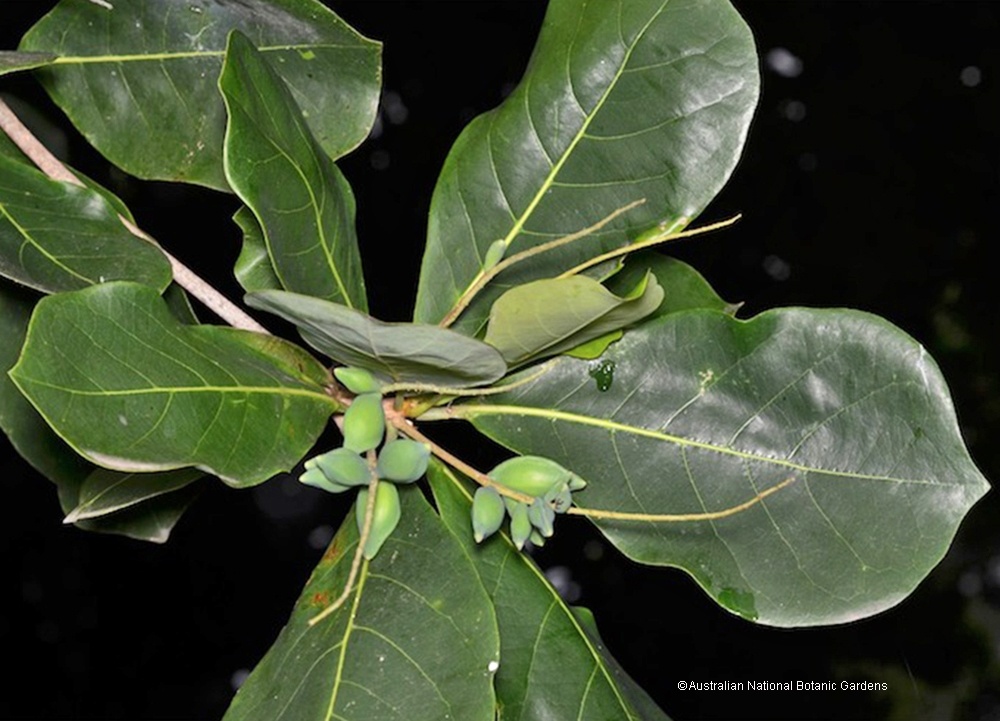Australian Tropical Rainforest Plants - Online edition
Terminalia melanocarpa F.Muell.



Mueller, F.J.H. von (1862), Fragmenta Phytographiae Australiae 3(20): 92. Type: Ad sinum Edgecombe Bay. Eug. Fitzalan.
Black Damson
A tree to 15 m high, deciduous, tessellated bark. Branches with appressed hairs.
Leaves simple and alternate, spirally arranged and crowded at ends of branches common for genus. Stipules absent. Petioles 0.8-2.5 cm, with sparse appressed hairs, occasionally with 1 or 2 obscure lateral glands present. Leaf blade obovate to broadly obovate, about 4.-13 cm long, 2.5 -8 cm wide, base cuneate, margin entire, apex obtuse. Nectar-producing glands (one, two or more) normally visible on the underside of the leaf blade, usually present towards the tips of the main lateral veins; domatia absent of rare. Midrib raised or flush with the upper surface. Leaves glabrous or glabrescent.
Inflorescence an axillary spike, about the same length as leaves; bracts lanceolate to linearly triangular, up to 1 mm long, caducous. Flowers male towards apex of spike and bisexual usually towards base, flowers 5-6 mm long, about 6 mm diam. Perianth of one whorl, glabrous inside and outside, lobes triangular, about 2 mm long. Staminal filaments glabrous, about 2-3 mm long. Disk villous. Style glabrous.
Mature fruits glabrous, ovoid or ellipsoid, about 2-3 cm long, 1.5-2 cm wide, compressed and with lateral wings, wing to 5 mm wide when fruit immature, apex commonly retuse, (recorded in literature as either beak present or beak absent). Mature fruit is green when fresh turning black when dried. Seed about 10-mm, cotyledons folded.
Features not available.
Occurs at the southern end of NEQ on Magnetic Island, and in CEQ southwards to Rockhampton. Often common amongst granite boulders, open forest, and coastal vine forest.
This species can be difficult to distinguish from Terminalia porphyrocarpa and Terminalia muelleri. Terminalia muelleri is distinguished by the lack of a wing on the immature fruit and the presence of prominent domatia on the leaves and T. porphyrocarpa by the distinctly bigger fruit. This taxon has also been confused with Terminalia arenicola which generally has bigger leaves, with domatia usually present at axis of veins as well as at ends of veins, and generally bigger fruit.





